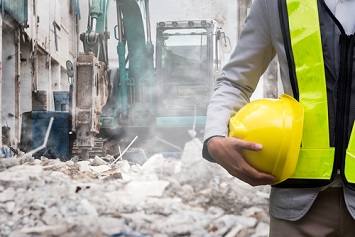The Occupational Safety and Health Administration’s (OSHA) Region 3 office announced it would extend enforcement of a national emphasis program (NEP) in three states and the District of Columbia to reduce or eliminate workers’ respirable silica exposures. Emphasis program inspections begin after May 3 in Delaware, Pennsylvania, Washington, D.C., and West Virginia.
On February 4, OSHA issued a revised National Emphasis Program for enforcement of the construction, general, and maritime industry standards for respirable crystalline silica exposure. On March 18, the Region 3 office announced it would extend the NEP in three states and D.C.
“The goal of this NEP is to reduce or eliminate worker exposure to dangerous silica particles and prevent the risk of workers developing serious silica-related diseases,” OSHA Philadelphia Regional Administrator Michael Rivera said in an agency statement.
The revised NEP addresses enforcement of OSHA’s amended standards for respirable crystalline silica—promulgated March 25, 2016.
The revised standards became effective June 23, 2016. Construction employers were required to begin complying with their standard as of September 23, 2017. General industry and maritime employers were required to begin complying with their standard as of June 23, 2018.
Region 3 efforts will focus on enforcement of the two new silica standards—one for the general and maritime industries and one for the construction industry—and will target specific industries expected to have the highest numbers of workers exposed to silica.
The revised respirable silica standards could affect approximately 5,354 workers in Delaware, 61,899 workers in Pennsylvania, 5,684 West Virginia workers, and 1,675 District of Columbia workers, according to OSHA’s Region 3 office.
Respirable crystalline silica consists of small silica particles that are generated by cutting, sawing, grinding, drilling, and crushing materials such as stone, rock, concrete, brick, block, and mortar. Inhaling crystalline silica dust can cause silicosis (an incurable lung disease), lung cancer, and chronic obstructive pulmonary disease, according to OSHA.
All regional and local area offices are required to comply with the NEP but are not required to develop their own regional or local emphasis programs. OSHA Region 3 personnel will conduct compliance assistance activities until May 3, after which inspections under the NEP will begin.
Changes in the revised NEP, which replaced a 2008 Crystalline Silica NEP, include:
- Revised application of the lower permissible exposure limit (PEL) for respirable crystalline silica to 50 micrograms per cubic meter (µg/m3) as an 8-hour time-weighted average (TWA) in construction, general industry, and maritime;
- Instructions for area offices to develop randomized establishment lists of employers in their jurisdictions for targeted inspections from the updated list of targeted industries; and
- New respirable crystalline silica inspection procedures for compliance safety and health officers (CSHOs).
The former TWA PELs for respirable quartz silica were calculated based on silica content and were approximately equivalent to 100 µg/m3 for general industry and 250 µg/m3 for construction and shipyards.
Programmed inspections under an emphasis program for priority hazards that are somewhat time intensive and are a high priority are awarded 2 enforcement units (EUs) under the OSHA Weighting System (OWS) issued September 30, 2019.

